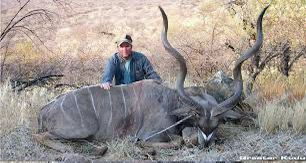THE Swakopmund Town Council is calling on residents to contribute ideas to the creation of a memorial park that would become a symbol of reconciliation.
The proposed park, called a unique project, will join the town’s forgotten cemetery with the adjacent former white cemetery. The old cemetery from 1904, containing the graves of hundreds of mostly Herero prisoners of war, has become badly dilapidated over the years.With no proper boundary wall, off-road traffic started criss-crossing the graves at the cemetery next to the Swakop River.The people buried there died because of the horrendous conditions in labour camps at the town during the Herero-Nama uprising against German colonial power from 1904 to 1907.An idea from two residents, Erika Rusch and Eckart Mueller, to establish a memorial park was accepted by Council in November 2003, after which a committee was established.”It is the only place in Namibia where two cemeteries can be joined into one park,” said Rusch at a press conference yesterday.”It is important for reconciliation, as it would unite us as a whole.”Mayor Rosina //Hoabes invited the public to come forward with proposals for the beautification of the graves, the cemetery and a monument.”The Memorial Park Committee wants the community to be involved in the project.”Eckart Demasius, CEO of the Municipality said it was important to give the community an opportunity to take part.”It does not matter who comes forward, even schools could take it up as a project.What matters is the end product.”Work has already started on the project.The first priority was to establish a boundary to join the two cemeteries together, and serve as immediate protection against off-roaders.With an amount of N$300 000 made available in the Council budget, student artisans from the Namibian Institute of Mining and Technology (NIMT) have started building a new wall.The Mayor said anyone from artists to architects to schoolchildren could submit their proposals to the CEO over the next three months.The committee would then consider proposals.”We hope to have the park in place by 2007, which would be 100 years after the war ended,” said Demasius.The old cemetery from 1904, containing the graves of hundreds of mostly Herero prisoners of war, has become badly dilapidated over the years.With no proper boundary wall, off-road traffic started criss-crossing the graves at the cemetery next to the Swakop River.The people buried there died because of the horrendous conditions in labour camps at the town during the Herero-Nama uprising against German colonial power from 1904 to 1907.An idea from two residents, Erika Rusch and Eckart Mueller, to establish a memorial park was accepted by Council in November 2003, after which a committee was established.”It is the only place in Namibia where two cemeteries can be joined into one park,” said Rusch at a press conference yesterday.”It is important for reconciliation, as it would unite us as a whole.”Mayor Rosina //Hoabes invited the public to come forward with proposals for the beautification of the graves, the cemetery and a monument.”The Memorial Park Committee wants the community to be involved in the project.”Eckart Demasius, CEO of the Municipality said it was important to give the community an opportunity to take part.”It does not matter who comes forward, even schools could take it up as a project.What matters is the end product.”Work has already started on the project.The first priority was to establish a boundary to join the two cemeteries together, and serve as immediate protection against off-roaders.With an amount of N$300 000 made available in the Council budget, student artisans from the Namibian Institute of Mining and Technology (NIMT) have started building a new wall.The Mayor said anyone from artists to architects to schoolchildren could submit their proposals to the CEO over the next three months.The committee would then consider proposals.”We hope to have the park in place by 2007, which would be 100 years after the war ended,” said Demasius.
Stay informed with The Namibian – your source for credible journalism. Get in-depth reporting and opinions for
only N$85 a month. Invest in journalism, invest in democracy –
Subscribe Now!






